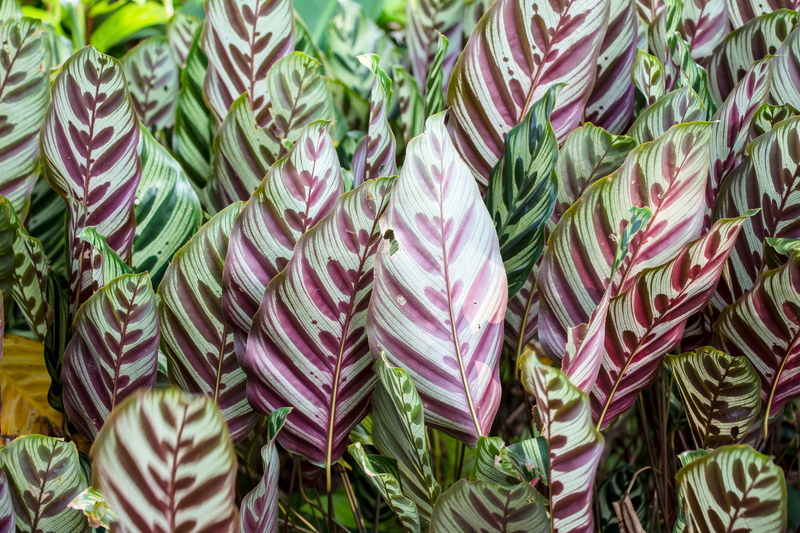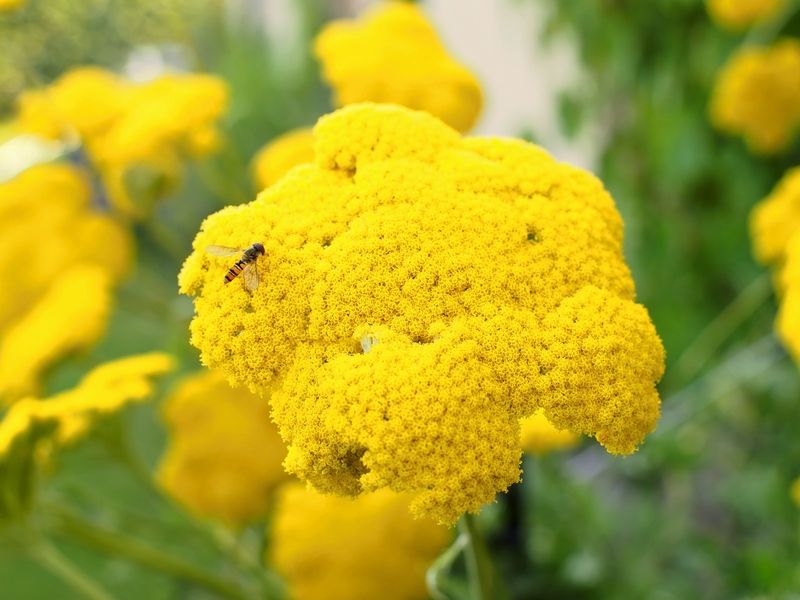How to Inspire Wonder with a Kid-Friendly Garden
Posted on 30/08/2025
How to Inspire Wonder with a Kid-Friendly Garden
Creating a kid-friendly garden is more than just planting a few pretty flowers--it's about building a stimulating, magical environment where children can explore, learn, and foster a lifelong love of nature. A well-designed garden for kids encourages curiosity, experimentation, and imaginative play, giving little ones the perfect space to connect with the natural world. Every patch, path, and plant can spark joy and inspire wonder.
This comprehensive guide will walk you through creative ideas, essential tips, and best practices to inspire wonder with a kid-friendly garden. From hands-on activities to safe layouts, discover how you can turn your backyard into an enchanting retreat for children of all ages--and provide them with memories to last a lifetime.
Why Create a Garden for Kids?
Nurturing Curiosity and Discovery
Children are natural scientists--constantly observing, questioning, and experimenting. A dedicated children's garden gives them a living laboratory where they can witness life cycles, seasons, and the miracle of growth up-close.
- Hands-on learning: Gardens offer tactile and sensory experiences missing from screens and textbooks.
- Connection with nature: Early positive experiences outdoors can foster environmental stewardship for life.
- Creative play: Mystical garden corners provide perfect backdrops for stories and imagination.
Promoting Health and Well-Being
A child-friendly garden encourages physical movement and healthy habits. Digging, planting, and harvesting get kids outside and moving, reducing screen time while improving overall health.
- Physical activity: Gardening incorporates exercise and coordination for growing bodies.
- Healthy eating: When children grow their own fruits and veggies, they're more likely to try--and enjoy--them.
- Mental wellness: Time spent in nature reduces stress, anxiety, and enhances mood in children.
Building Lasting Skills
A garden designed for children teaches practical skills such as planning, observation, responsibility, patience, and cooperation--qualities that benefit them beyond the backyard.

Essential Elements of a Kid-Friendly Garden
Safety Comes First
Before diving into colors and themes, ensure your outdoor space is safe for children. Here are important steps:
- Fence the area: Use low fences or raised beds to define boundaries and keep kids within view.
- Remove hazards: Clear sharp tools, toxic plants, and poisonous chemicals from children's reach.
- Non-slip pathways: Choose surfaces like bark, mulch, or rubber mats that prevent falls.
- Accessible features: Design beds and features at heights suitable for little hands.
Inspiring Plant Choices
The heart of a wonder-inspiring children's garden is its plant life. Choose varieties that are:
- Visually stimulating: Bright colors, unusual shapes, and patterns intrigue kids (think sunflowers, rainbow chard, zinnias).
- Tactile and sensory: Plants like lamb's ear (fuzzy leaves), snapdragon (squeeze to see flowers "talk"), and mint (fresh scent).
- Edible and safe: Grow strawberries, cherry tomatoes, and snap peas for healthy snacks.
- Fast-growing: Kids love quick results. Radishes, lettuce, and nasturtiums sprout up fast.
Pro tip: Avoid spiky, toxic, or allergenic plants. Always research before planting in a kid's zone.
Creative Ideas to Spark Kids' Imagination
Themed Garden Spaces
- Fairy Tales and Story Gardens:
Transform a corner into a magical fairy grove or a dinosaur land. Let children participate in decorating with homemade gnome homes, painted rocks, or miniature figurines. Plant "fairy flowers" like foxgloves and violets, or prehistoric-looking ferns and cycads.
- Rainbow Gardens:
Plant flower and vegetable beds as living rainbows. Assign each row a color and let kids pick seeds or starts. Not only does it brighten the space, but it helps children learn colors and patterns, too.
- Pollinator Gardens:
A pollinator-friendly plot attracts butterflies, bees, and hummingbirds. Milkweed, lavender, and marigolds are great choices. Supplement with bug hotels and butterfly puddling stations for up-close critter watching.
Edible Gardens for Healthy Snacking
Kids are more likely to eat what they grow. Incorporate easy-to-grow, kid-sized snacks. Try:
- Cherry tomatoes, snap peas, and bush beans--perfect for little hands to pick and munch fresh off the vine.
- Strawberries and blueberries--plant in hanging baskets or containers for easy access.
- Herb spirals--let kids sample basil, mint, and parsley as they walk by.
Create a "pizza garden" filled with tomatoes, oregano, basil, and sweet peppers to make mealtime interactive.
Wildlife Watching Zones
Encourage natural curiosity with areas specifically designed for animal visitors. Add:
- Bird feeders and baths--attract colorful feathered friends for observation and identification.
- Bug hotels--from bamboo tubes to bundles of sticks, these encourage beneficial insects.
- Pond or mini water feature--create a safe, shallow pond with rocks for frogs and dragonflies.
Remember to always supervise children near water features.
Designing a Kid-Friendly Garden Layout
Accessible Paths and Secret Hideaways
A special garden for children should feel like their domain--a sense of ownership and freedom is key.
- Winding paths: Create meandering trails with stepping stones, logs, or wood chips. These encourage exploration and imaginative journeys.
- Secret nooks: Use sunflowers, tall grasses, or willow domes to build hideouts and "rooms" within the garden. Children love spaces just their size.
- Wide access: Paths should be wide enough for wheelbarrows and little feet, and easy to navigate for kids of all abilities.
Interactive Features for Play
A truly magical kids' wonder garden is alive with activity. Consider adding:
- Sensory stations: Sand pits, water tables, or mud kitchens add hands-on elements for messy play.
- Garden art: Homemade wind chimes, stepping stones, or painted plant markers invite creativity.
- Movable pots: Let kids rearrange planters or fill their own containers--ownership encourages pride.
- Climbing structures: Teepees made of beans or peas, tunnels, or child-sized arbors add vertical interest and places to explore.
Hands-On Learning Activities in the Garden
Daily and Seasonal Exploration
Involve kids in the magic of change by introducing regular activities, such as:
- Garden journal: Track plant growth with drawings, photos, or pressed flowers. Spark scientific curiosity by recording observations about seeds, weather, and insects.
- Weather watch: Set up homemade rain gauges or wind socks. Teach simple records for tracking rainfall and temperature.
- Scavenger hunts: Search for bugs, colors, textures, and shapes. Rotate themes for endless fun.
Creative Projects to Inspire Wonder
- DIY bird feeders: Make feeders from recycled bottles, pinecones or orange halves. Observe which species visit each one.
- Sun prints and leaf art: Use fabric or paper to create prints with leaves, flowers, or grasses found in the garden.
- Seed bombs: Mix wildflower seeds, clay, and soil; shape into balls and let kids "plant" them in open spaces.
- Create a bug hotel: Layer sticks, pinecones, bricks and straw in a wooden box--uncover hidden ecosystems together.
Engaging in these activities not only builds scientific literacy but also sparks the wonder that makes a child-focused family garden truly memorable.
Tips for Maintaining Your Kid-Friendly Garden
Keep it Simple and Manageable
- Start small: Avoid overwhelm--choose a manageable plot or a handful of container gardens, and grow with your child's interest.
- Choose low-maintenance plants: Use perennials, tough annuals, and native plants to reduce weeding and fussing.
- Involve kids in maintenance: Teach watering, weeding, and harvesting as part of daily fun.
Adapt with Growth and Interests
Your children's preferences will change and their abilities will grow. Check in regularly--what new themes interest them? Encourage ownership by letting kids swap out decorations or choose new seeds each season.
Common Challenges and How to Overcome Them
Short Attention Spans
Little ones may lose interest quickly. Counter this by growing quick-sprouting seeds, keeping activities brief and varied, and celebrating small wins.
Unexpected Weather
Gardens teach resilience. Use rainy days to research garden creatures or plan next season from seed catalogs. In hot, dry spells, experiment with watering schedules or shade tents.
Pests and Plant Failures
Let garden mishaps be learning moments. Explore organic pest control, plant resilience, and nature's cycles. Encourage children to problem-solve: What could we try next time? Inspiring wonder with a kid-friendly garden isn't just about success--it's about discovery and the magic of growth.

Frequently Asked Questions about Kids' Gardens
What are the best plants for a children's garden?
- Sunflowers, nasturtiums, and snapdragons are colorful and easy to grow.
- Sensory plants like lamb's ear and mint engage touch and smell.
- Edibles like strawberries, peas, and carrots encourage healthy eating.
How can I ensure my garden is safe for children?
- Remove sharp or toxic plants and chemicals.
- Supervise water features and provide shade to prevent sunburn.
- Check equipment and fences regularly to maintain a secure environment.
What are some fun garden activities for kids?
- Scavenger hunts, art projects, birdwatching, mud play, and fairy house building are perennial favorites.
- Starting seeds or making compost can be both educational and exciting.
Conclusion: Growing Memories and Lifelong Wonder
A wonder-inspiring, kid-friendly garden is a gift that keeps growing. By nurturing curiosity, creativity, and a connection to the earth, you're sowing the seeds for healthy, happy, and inspired children. Whether you have an acre or a balcony, your garden can become a cherished place of discovery and joy. With the right choice of plants, engaging themes, and hands-on activities, you'll cultivate not just plants, but also precious memories and a sense of wonder that lasts a lifetime.
Ready to start your own child-focused wonder garden? Embrace the mess, celebrate the small wins, and, above all, let your little gardeners lead the way. Their imagination will transform your backyard into a world of endless discovery.

